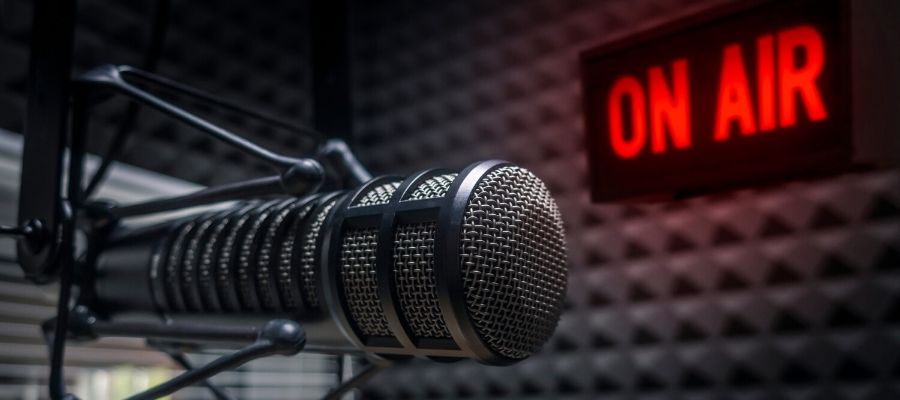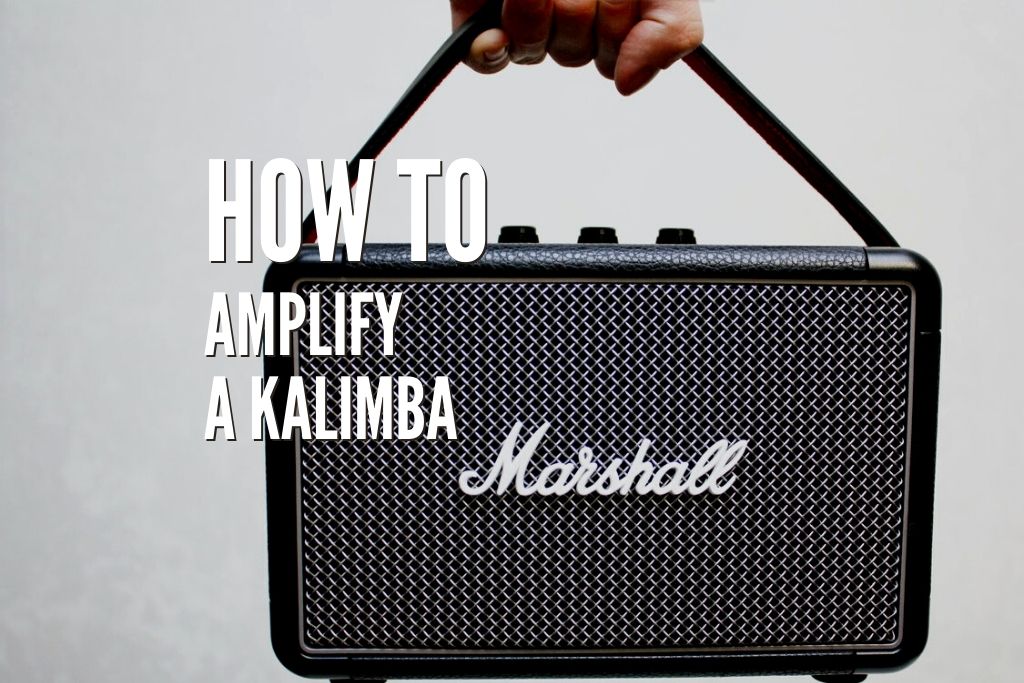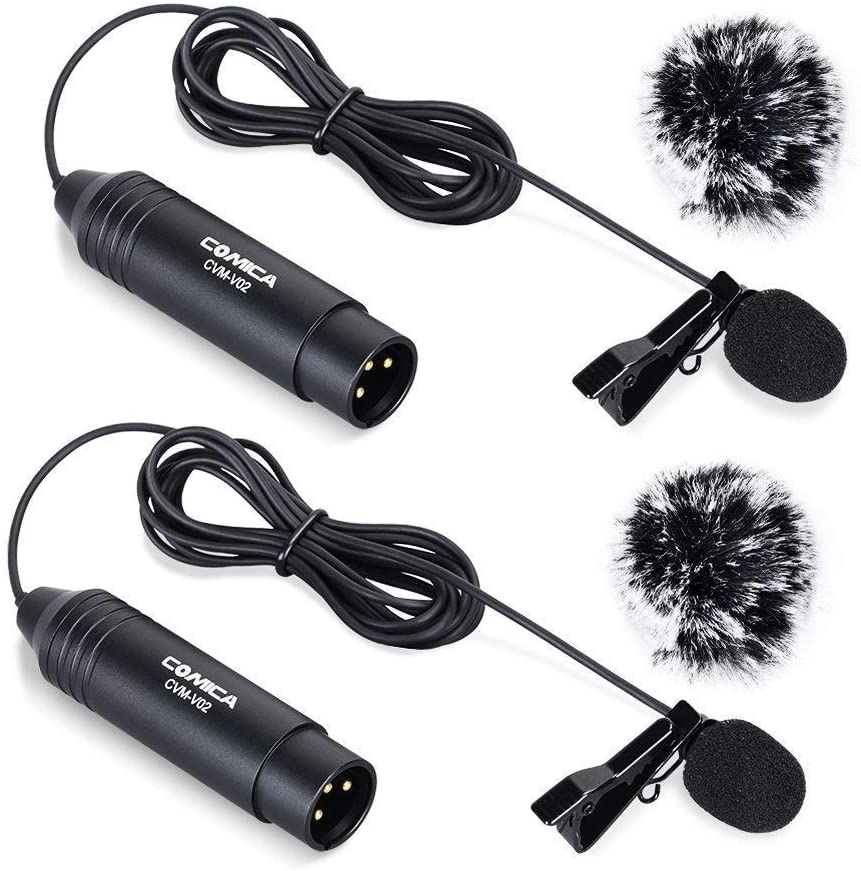Kalimba is an excellent instrument that originated in Africa. But so many things have changed since the first mbira appeared thousands of years ago. Today, we can find the westernized version of this thumb piano in many stores across the world.
There are two main ways to amplify the kalimba. The first one is using a microphone, and the second one is using a pickup and amplifier.
If you are one of the many kalimba enthusiasts out there, you probably wondered if there is a way to improve the quality of the instrument and amplify it somehow.
Using A Microphone

One of the easiest methods to amplify the sound of a kalimba is by using a microphone. Naturally, there are several ways you can use a microphone with kalimba. For the first method, you will use a mic in the same way you would use it for singing.
The microphone will record or simply amplify the sound of the kalimba and you’ll be able to play it on the speakers or mod it in production.
With a good microphone, you’ll be able to “capture” both the sound of tines and the “wah” sound you can get if you cover the hole. It is a great way to record or simply amplify the authentic sound of the thumb piano.
The second method involves smaller mics that you can attach directly to the instrument. The idea behind both methods are similar, and you’ll be able to capture the incredible sound of the kalimba.
Needless to say, the quality of the microphone will have a major impact on the sound coming out of the speaker.
What Kind Of Mics You Can Use

As I mentioned, if you want your kalimba to sound great, you might need to invest in a piece of high-quality equipment. Some microphones can be a bit expensive, and you should consider how much you are willing to spend.
Ribbon Mics
People who had a lot of experience recording kalimba and other instruments say that ribbon microphones are a great way to capture the sound. And cardioid microphones like AT 4041 can do a great job as well.
Unfortunately, ribbon mics can be rather expensive, and not many players will be willing to invest tons of money into something like this.
Omni Lapel Mics
Omni Lapel microphones are incredible combined with the kalimba. You can choose the place you like the most, and attach them there. This way, you can adjust the quality of sound, and find a perfect spot for your taste.
Of course, you can use any type of microphone as long as it’s good. If you want to move a bit while you play, you should seek a mobile microphone, while for recording, a ribbon will do a great job.
Pros And Cons Of Mics

The main issue many players will have with microphones is price and quality. The cheaper ones will be affordable while the quality will be quite bad. On the other hand, you will need to invest a lot of money if you want to get professional equipment.
You will probably want to capture the sound quality of the kalimba, and a bad microphone will fall flat. Pro mics can be over $600, and not many players will be willing to invest as much.
Furthermore, the microphone will capture any sound in the surrounding, and if you will need to worry about canceling the noise as well. Of course, if you don’t want to record dogs barking in your neighborhood.
For simple recording, they are still a great choice, and Omni Lapel mics are probably the best option. These have a price of around $50, and it is something that is not as bad for the quality you’ll get.
Pickups For Kalimba

The second option to record and amplify the sound is using a kalimba pickup. Similarly to how electric guitar works, the pickup will “notice” the change in the frequency, and you’ll be able to plug it into the speaker or an amp.
Unlike the electric guitar, you won’t get magnetic pickups, and the ones for kalimba are usually piezo.
Kalimba with a pickup will eliminate any background noise, and you’ll be able to use pedals and effects with ease. All you have to do is plug it in, and start playing.
You can also use it with software and effects which can add many exciting possibilities for creating music.
Piezo Contact Pickup
Kalimbas will use piezo pickups, and you can find ones that are easy to install and use. The pickup for kalimba will work similarly to microphones, and you can just attach it to the box.
Piezo pickups work by picking up the vibrations of the instrument, and they don’t have magnets. Usually, acoustic instruments will use these models, and as you can expect, kalimba is a perfect one for piezos.
Finding the right pickup won’t be a problem, and you can use any model designed for acoustic instruments. Most piezos come with self-adhesive tape and standard output.
This will allow you to easily attach it to the resonator, and use the output to plug into an amp or a speaker.
Pros And Cons Of Pickups

The main advantage of pickups is that they won’t record any surrounding noise. You won’t need to worry about your neighbor’s dog or traffic. Furthermore, they are simple to use and install.
However, pickups won’t record any additional techniques like vibrato or wah, and you might have problems with the speaker.
By problems I mean quality. Piezo pickups tend to have a very high impedance, and it might not work well with the speaker.
While it is possible to make everything work, you will need a preamp that’s designed with these pickups in mind, which means several megaohms.
Some players also had problems with feedback while using kalimbas with piezo pickups. While they are great for recording, you might need to mod your equipment for everything to work properly.
Kalimba With A Built-in Pickup
If you already have a kalimba you love, you will need to find a way to amplify the sound. However, if you plan on buying a new one, you can get models with already installed pickup.
These models are easy to use, they can work both as acoustic and electric instruments, and you won’t need to do any installation by yourself. All you have to do is plug the kalimba into an amp, and start playing.
Since these models are designed for pickups and with pickups in mind, they are beautiful and there isn’t anything sticking out. Unlike a taped microphone, here, you won’t have a visible pickup, and they can be high-quality instruments.
Amplifying The Kalimba By Yourself

If you don’t want to bother with microphones and pickups, and just want to play the kalimba at home, there are several ways to amplify the sound in your home.
These methods are mostly DIY, and they can be a lot of fun. The first method involves a hollow door or a board. You can place the instrument on top of it, and press it down. Once you start playing, the wood will amplify the sound, and you’ll be able to hear it a lot better.
Of course, you might need to play it on the floor or in some uncomfortable position.
The second method is with a bowl. Just place the kalimba inside the bowl and start playing. The sound from kalimba will bounce off the walls and the bowl will act as an amplifier. This is great for practicing since you’ll be able to hear everything better, and you won’t need to invest a dime.
Why You Should Try Amplifying The Kalimba

So, why should you even try amplifying the kalimba? Well, it’s fun! It gives you a new perspective, and you might have some great ideas once you try these methods.
It is also a great way to record your songs and to play with the sound if you have any sound-editing software.
Furthermore, if you run the kalimba through some effects, you’ll open a whole world of possibilities. Imagine playing the kalimba with a delay or reverb!
Finally, you’ll be able to play the instrument live. If you are looking to create a band revolving around the thumb piano, or you just want to play with your friends, you will need to be heard.
Kalimba is not really a loud instrument, and the only way people will hear you is if you amplify the sound coming out of it.
Summary
Amplifying the kalimba can be fun and it is a great way to record the instrument. There are two main methods for doing this. The first one is by using a microphone, and the second one is with a pickup.
If you want to use a mic, you can either tape one to the kalimba, or you can use it as singers do.
Pickups for a kalimba, on the other hand, are usually piezo, and you can either find an instrument with a built-in pickup or install one by yourself.
Of course, if you are just looking to have some fun at home, you can try out the DIY amplifier by placing the instrument in a bowl. The sound will bounce off the walls and come out louder!
Each of these methods can be great and the only thing you should ask yourself is what you are looking to achieve. Remember, if you want to record the instrument, you might need to invest a bit in the equipment.
If you found this article useful you may want to save this pin below to your Kalimba board

Recent Posts
How To Play “How Deep Is Your Love” On Kalimba - Tabs Included
There are so many incredible songs you can learn to play on Kalimba, but if you are a beginner, the best idea would be to go easy. But finding a perfect song to learn is never easy. Fortunately, this...
Jingle Bells is among the most commonly sung (and the most well-known) songs in the world. Everyone heard of this one, and it is one of the go-to songs for beginner musicians. Regardless of...





